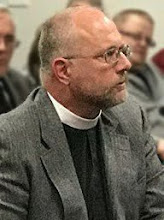Nathanael, son of Talmai (i.e. Bar-tholomew), is the sixth person that we come to know in the Gospel according to St. John. When we first meet him, he is sitting under a fig tree. Philip sought him out, there, and beckoned him to “come and see” a new arrival from Nazareth (John 1:46).
Jesus had just been baptized by John in the Jordan river. Instead of returning to His home in Nazareth, He moved to Capernaum, a town on the north shore of the sea of Galilee. Philip had encountered Jesus and was convinced that he had met “Him of whom Moses in the law and also the prophets wrote.” So, he went to tell Bartholomew.
This is a first. Until this point, Jesus had taken the initiative to approach certain people and call them to be His disciples. But after hearing Philip, Nathanael approached Jesus. You could say that Philip was the first evangelist. He didn’t keep the news of Jesus to himself but invited another.
Nathanael, for his part, was not overly impressed by Philip’s news. He wryly asked, “Can anything good come out of Nazareth?” His flippant dismissiveness very nearly dismissed the best thing that this universe has ever seen. For Jesus is not just another thing in the universe, He is the Creator of the universe Himself. But rather than say all this, he replied, “Come and see.”
Jesus would do the rest. Before Philip could introduce Bartholomew to Jesus, Jesus told his followers all about him. “Behold, an Israelite indeed, in whom there is no deceit” (John 1:47). From the start, Jesus distinguishes between ethnic Israelites and True Israelites. As St. Paul teaches, “not all who are descended from Israel belong to Israel” (Romans 9:6).
Faith makes the difference; and faith speaks the truth. Nathanael did not yet know the truth about Jesus. (Jesus would soon change that.) But once he knew the truth, he would not keep his mouth shut. It is out of Nathanael’s mouth that we first hear, “Rabbi, you are the Son of God! You are the King of Israel!”
After Jesus suffered and died to atone for the sins of the world, and after He rose again and ascended to the right hand of the Father, Nathanael Bartholomew would take this message to the ends of the earth. Jesus made him one of the twelve Apostles.
History tells us that he traveled to India, Armenia, Ethiopia, Iraq, and beyond. Like Philip who first came to Bartholomew, he could not help but tell others of the great things that he saw. Also like Philip, Bartholomew couldn’t take credit for the people who believed. All he said was, “come and see.” Jesus takes it from there.
Nobody is exactly sure how Bartholomew died. Some say he was crucified, others that he was beaten, others that he was skinned alive and beheaded. One source says that they did all of these things to him, one after the other. But however he died, all agree that he was killed because his preaching brought so many people to believe that something amazingly good did, indeed, come from Nazareth.
Michaelangelo thought so highly of Bartholomew that he placed him on Jesus immediate left in his famous fresco of the last judgement. You can tell the figure is Bartholomew because he has his own skin draped over his arm while holding a skinning-knife in the other hand. You can tell that Michaelangelo identified himself with Bartholomew because he painted his own self portrait on the face of Bartholomew’s skin.
Tomorrow, August 24, is the annual remembrance of Nathanael Bartholomew. A great way to observe this remembrance is to read the Gospel of St. John. For in this Gospel, Jesus’ story is bracketed by the appearance of Bartholomew in the very first chapter and, again, in the very last.


No comments:
Post a Comment